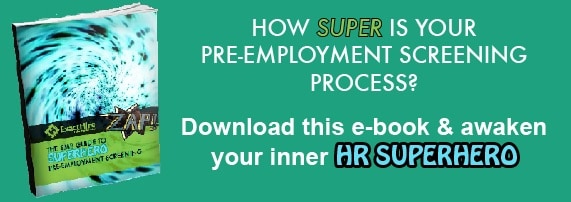If you are a small or mid-sized organization (SMB), there are dozens of potential applicant tracking system (ATS) options suitable for your company size available on the market. While price is always important, comparison shopping can be difficult — no two systems are alike.
To help with your decision making process, below are 5 key features that most any SMB will want from an ATS — even if you don’t know it yet!
Be sure the ATS you select does more than just paste your logo onto an otherwise generic careers page. Instead, find an option that uses your homepage URL address and design/style settings as inspiration for the hosted career portal. Ideally, you should also have the ability to add other pages to your recruiting software portal to showcase information about company benefit plans, history, culture, career paths, etc.
2 – Flexible Employment Application Process for Applicants
Don’t settle for a “one-size-fits-all” online application. You need the ability to get the screening information you want in the manner that will resonate best with your applicants. This should include the ability to have different processes for different types of positions (i.e., hourly vs. salary). You may need a shorter initial process for positions that are highly competitive, while positions that tend to provide you plenty of applicants may be better suited for a more comprehensive process to make sure those applicants are serious about that opening.
This is very different than scanning resumes for keyword matches. These types of questions are created by you and allow you to quickly determine up-front whether applicants meet your basic qualifications. In addition, you should have the ability to automatically apply scoring to various applicant responses, allowing you to see how those applicants rank, relative to one another. These should be questions you develop for your unique jobs and criteria. This ensures you get meaningful information about your applicants.
Many less expensive software solutions do a great job of allowing you to gather applicant information and hold it for review. Unfortunately, in many instances, these applications don’t provide much beyond that point. Be sure the hiring software you select will allow you to keep track of referral sources, notes, progress through your unique hiring steps, etc. Otherwise, you may find down the road that you have a lot of candidates in a database, but not much else. Do a little more investigating initially to make sure you can harness all of the things you’ll need to actually have valuable intellectual property going forward.
We’ve all seen technology solutions that promise they’re so simple, you’ll never need help. The reality is that is a near impossibility. Good applicant tracking software should be intuitive. No matter how intuitive it may be, however, you will have questions and/or you may find that something doesn’t work the way it should. Ask any potential provider what type of user support is available. Online knowledge bases are very helpful and can address many of the things that you may encounter. At the same time, you should check to make sure that live support is available and isn’t limited to offshore or call center options.
Keep these factors in mind when you consider selecting any type of recruiting or online application software solution. There are certainly other features and benefits that may be needed for your organization, but if these core things are present, you can be confident you’re dealing with a solid and reliable provider.
To learn more about ExactHire’s products, please visit our resources section or contact us today. –

Image credit: 20120605_1362  by Marco Ghitti (contact)
by Marco Ghitti (contact)
![]() by WEST MIDLANDS POLICE (contact)
by WEST MIDLANDS POLICE (contact)
